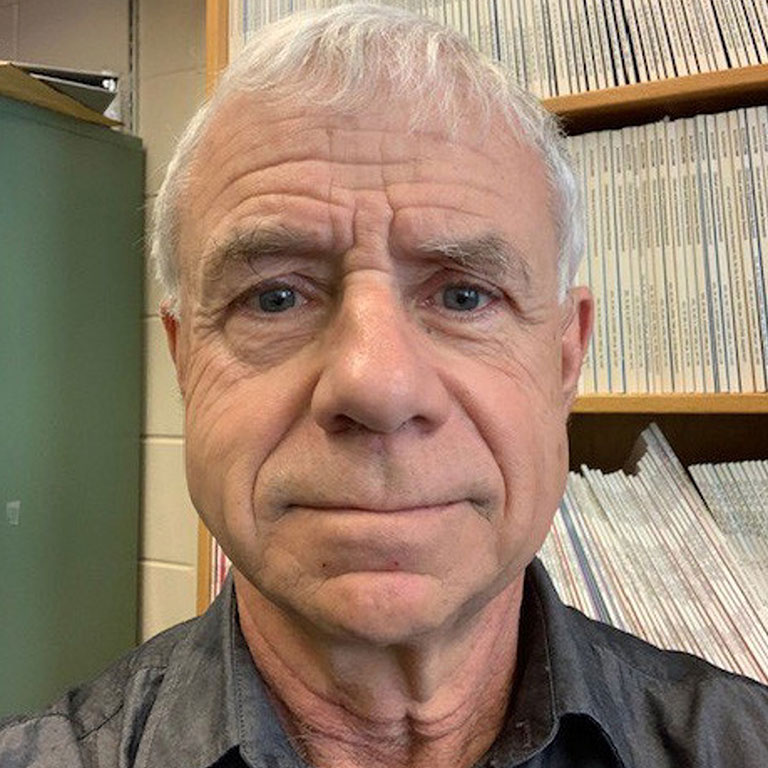COVID-19 has changed every aspect of people's lives, from how we shop for essential items to how we educate our children.
It also is changing how research is being conducted, particularly research that is essential to the public's health and wellbeing. Two Indiana University researchers have found a way to work within the parameters of this changing world while also providing essential interventions to young people at-risk of, and those who are struggling with, substance abuse.
"The pandemic has led us to move our current research project online and it has reinforced our earlier convictions that this is an important avenue for reaching out to people in our state that have substance use problems," said Peter Finn, professor in the College of Arts and Sciences Department of Psychological and Brain Sciences at IU Bloomington.
Finn has been studying decision-making behavior in the early stages of alcohol use disorders for more than 35 years.
That work includes a study involving young adults who are current binge drinkers and are at-risk for developing a more severe and chronic alcohol use disorder. His team created an intervention called impulsive decision reduction training, which is similar to cognitive behavioral therapy. The intervention focuses on changing people's decision making and reducing impulsive drinking decisions, and reducing binge drinking and patterns of excessive drinking in general.
Like most interventions, Finn's takes place in person. With that option gone due to social distancing, Finn has now turned to the virtual world.
"Before, we were seeing people face-to-face with a classic type of intervention," Finn said. "The pandemic required us to be creative and this new way of delivering the intervention may actually have long-term benefits well after the pandemic is over."
Leslie Hulvershorn, associate professor of psychiatry at the IU School of Medicine, also has adjusted a study she is conducting with 11-12-year-olds who are at varying risk for the development of substance use disorders.
Normally, Hulvershorn's study would include a mental health assessment in person, with a clinician, but those are now being done via Zoom health. Occasional bandwidth issues aside, the virtual assessment process is going well.
In addition, she leads another project that seeks to reduce a one-hour assessment to a five-minute assessment that can be done at home or in the office and was developed to address the workforce shortage in behavioral health. Those assessments are also being done via Zoom.
With many people forced to shelter in place, the pandemic is shining a spotlight on telemedicine — when patients and doctors connect via videoconferencing. A tool previously used to reach people living in rural areas, more health systems are now being forced to utilize online services to help patients, particularly those with substance use disorders, receive the help they need.
That shift has come quickly. The federal CARES Act is providing funds to help physicians and health groups provide telehealth services; allows for Medicare reimbursement to telehealth providers; and allows health centers to apply for funds to cover the cost of telecommunications and broadband connectivity, as well as new devices, services and personnel.
The U.S. Drug Enforcement Administration is allowing physicians to prescribe controlled substances based on telehealth visits. Physicians treating patients with opioid use disorder who have a waiver allowing them to prescribe buprenorphine may now issue these prescriptions based on a telephone visit.
Hulvershorn said she is amazed at how fast mental health and addiction treatment went virtual during the pandemic. Although there have been some challenges, she said, overall working virtually has been successful for her.
"Families love not driving and receiving care in their home," she said. "As a psychiatrist, I found it fascinating to see my patients in their own home environment. I think they find it comforting that I am joining them there. I think the field of psychiatry, both research and clinical, can expect that some of these monumental changes will stick and change our field even after COVID."
Finn admits there are some cons to telemedicine including tests and interactions that can only be done in person and privacy concerns yet to be worked out. But there could be huge benefits, he said, for the substance use disorder field by allowing interventions to be delivered in a way that could increase access for those reluctant to seek help directly from a treatment center or healthcare/addictions treatment provider.
"Stigma is a huge barrier in people seeking treatment," Finn said. "Telemedicine could allow us access to people who would never show up at a psychiatric office, rehabilitation center or other facility."
Being able to virtually talk to his study participants is especially important in current times, Finn said, when stress and social distancing can be triggers for people with substance use problems and can lead to problems for those who have never identified before.
"During this time people are isolated and generally speaking, stress levels are higher," Finn said. "When that happens, a certain number of people are likely to consume more alcohol. That can lead to significant problems. This is a time when we will look back and we will see increase rates of depression, substance use problems and other illnesses."




